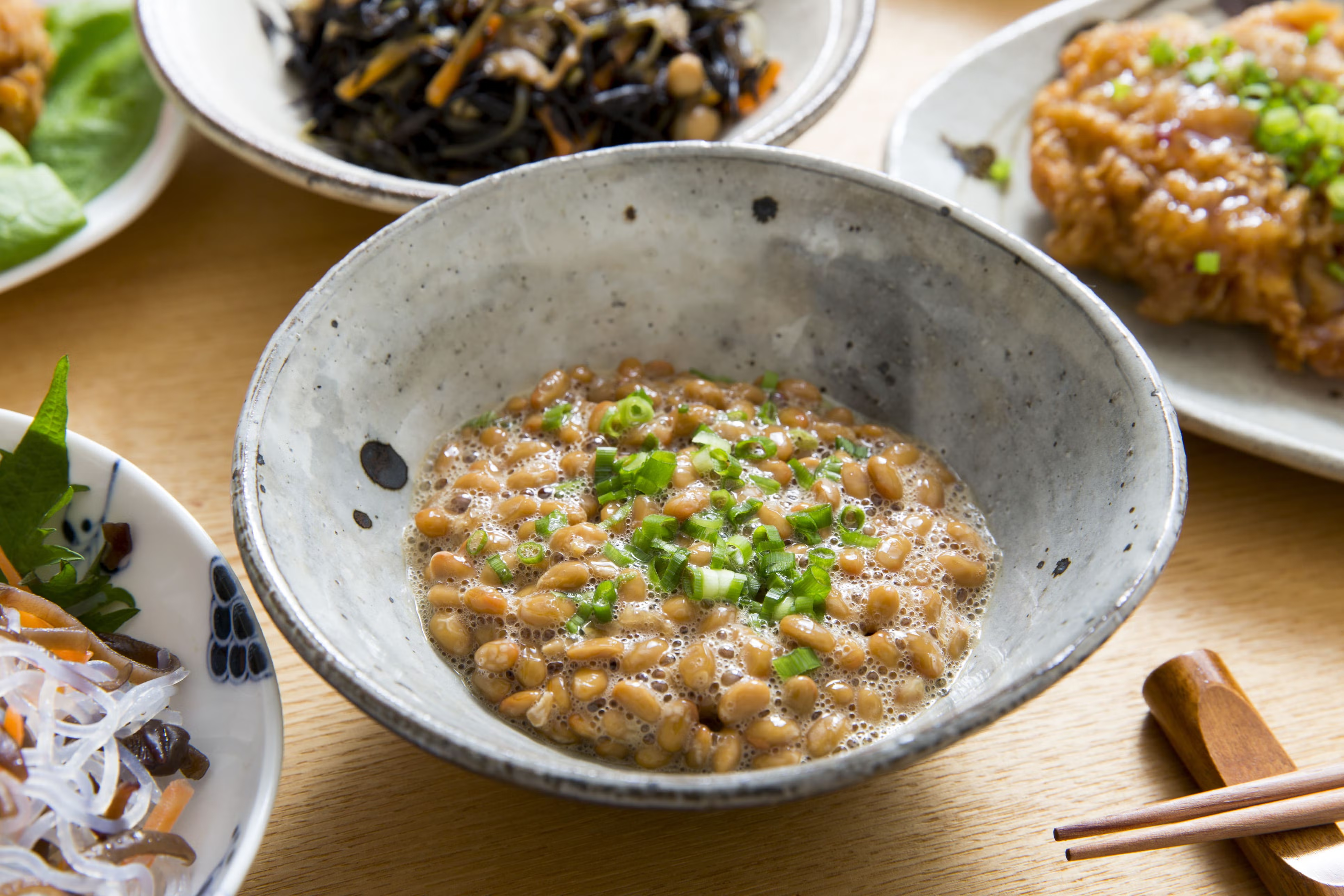It’s no secret that health and wellness has been a huge global trend in the food and restaurant industry for the last few decades. As part of this, there’s been a massive growth in the number of fermented foods available on the market and growing conversation around their health benefits.
Fermented foods are said to have benefits for gut health, brain function, the immune system, skin and even weight loss. Foods like kimchi and kombucha are probably two of the best-known fermented food trends to hit Europe. But what about Japanese natto?
What is Natto?
Hailing from Asia, these Japanese fermented soybeans have been eaten there for thousands of years, usually as a breakfast meal with soy sauce, mustard, chives and rice – and sometimes even raw egg. Washoku (Japanese cuisine) has a long history of pairing soybeans with rice, but natto hasn’t quite taken off in the rest of the world in the way that some other Japanese food exports, like sushi and sake, have done. It’s pronounced as not-TOE in Japanese, with the first character meaning 'to offer' and the second meaning 'bean'.
The dish comes with a lot of nutritional and health benefits for the heart, cholesterol and blood pressure. It’s also a great way for those following a plant-based diet to get protein and nutrients. The word 'superfood' is used a lot in the industry, but with natto it seems justified, particularly with Japan’s reputation for having some of the longest life expectancies in the world, and the Japanese diet contributing to this.
There are over 700,000 tonnes of natto made in Japan each year, and over 7.5 million packets sold throughout the country. According to reports in Japan Today, natto is currently more popular than ever in Japan, seeing a jump of 20% in consumption from last year. There are even – completely unsubstantiated – rumours that the natto fermented soybeans may be beneficial against coronavirus, after reports that the areas of Japan that consumed the most natto had the lowest numbers of confirmed cases.
Health Benefits of Incorporating Natto Into Your Diet
1. Rich in probiotics
One of the main reasons that fermented foods are growing so much in popularity is the fact that they provide a source of probiotics, which can improve gut health, digestion and your immune system. Natto is rich in natural probiotics, bringing all of those benefits with it. It’s even thought to potentially aid weight loss.
2. Packed with protein
One serving of natto provides around 15mg of vegan-friendly, high-quality protein. This is perfect if you’re trying to follow a plant-based diet or reduce your meat consumption, but are struggling to get your protein.
3. Soy sensitive or gluten free? Don’t worry about it
Because of the way that natto fermented soy is made, it’s much easier on the stomach than regular soy. The fermentation process breaks down some of the hard-to-digest proteins that some people who are sensitive to soy can struggle with. Natto is also gluten-free which is helpful for those who avoid gluten in their diet.
4. Get a natural Vitamin K fix
It can be tricky to get Vitamin K – which has blood and heart benefits - from a natural source, but natto provides this in spades. It also provides Vitamin K2, which is really important for women who want to keep their bones strong and healthy. K2 makes it easier for calcium to move into the bones and helps to move calcium out of the heart and reduce blood pressure.
5. Reduces inflammation
Along with the vitamin K benefits of natto, it can also help to reduce inflammation in the body. Inflammation can be a big problem for a range of health conditions.
6. Load up on calcium and iron
Another benefit for bones, blood and teeth, is that natto is filled with calcium and iron. This is another massive bonus for those for those following a plant-based diet who might find it difficult to get these nutrients from natural sources.
7. Fill up on fibre
Increasing your fibre intake can have some great benefits for digestion and heart health. Surprise, surprise, natto is full of fibre too.
Natto is made by fermenting soybeans with bacillus subtilis, a bacteria that originated as a rice by-product but is now manufactured independently for use in natto making. Natto can be made with other types of beans too – like black beans, adzuki beans, kidney beans and even sunflower seeds - but the bacteria live best in soybeans. The fermentation process creates a unique food that stands out and varies slightly from batch to batch.
There are some other bacillus-fermented foods available in East Asia, South Asia and Africa. In Korea they have a variety of fermented soybean dishes too, the most common being doenjang, which is very similar to natto but without the goodness.










